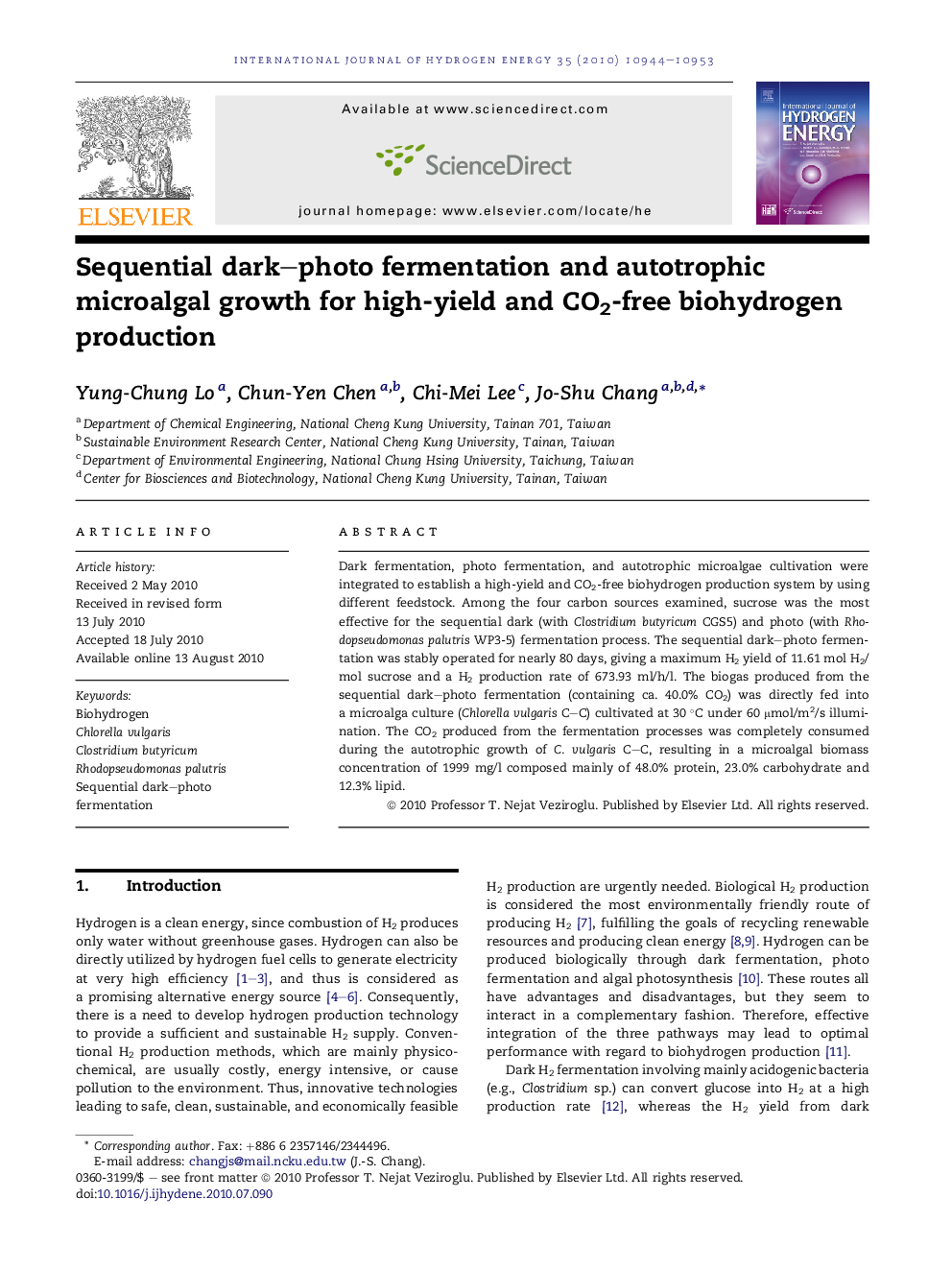| Article ID | Journal | Published Year | Pages | File Type |
|---|---|---|---|---|
| 1276689 | International Journal of Hydrogen Energy | 2010 | 10 Pages |
Dark fermentation, photo fermentation, and autotrophic microalgae cultivation were integrated to establish a high-yield and CO2-free biohydrogen production system by using different feedstock. Among the four carbon sources examined, sucrose was the most effective for the sequential dark (with Clostridium butyricum CGS5) and photo (with Rhodopseudomonas palutris WP3-5) fermentation process. The sequential dark–photo fermentation was stably operated for nearly 80 days, giving a maximum H2 yield of 11.61 mol H2/mol sucrose and a H2 production rate of 673.93 ml/h/l. The biogas produced from the sequential dark–photo fermentation (containing ca. 40.0% CO2) was directly fed into a microalga culture (Chlorella vulgaris C–C) cultivated at 30 °C under 60 μmol/m2/s illumination. The CO2 produced from the fermentation processes was completely consumed during the autotrophic growth of C. vulgaris C–C, resulting in a microalgal biomass concentration of 1999 mg/l composed mainly of 48.0% protein, 23.0% carbohydrate and 12.3% lipid.
